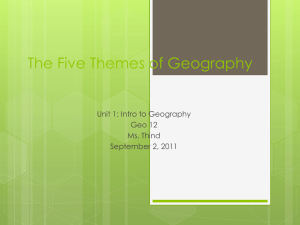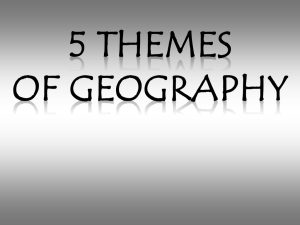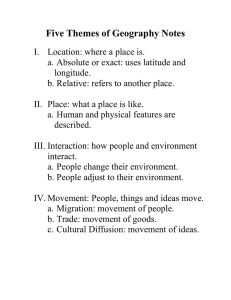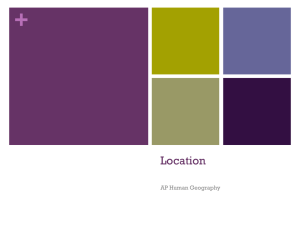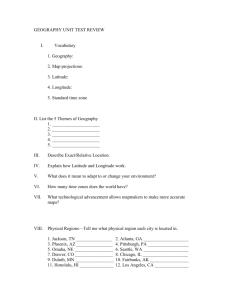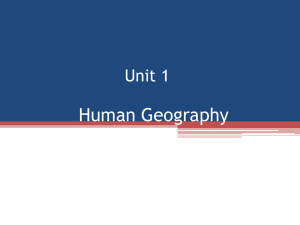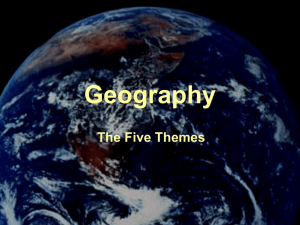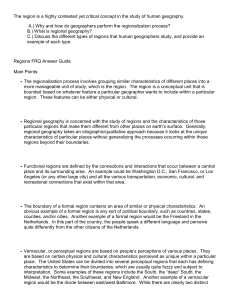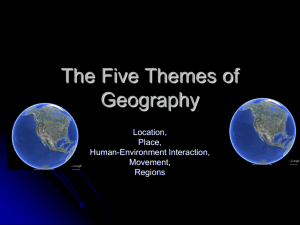5 Themes of Geography - Academy Charter School
advertisement
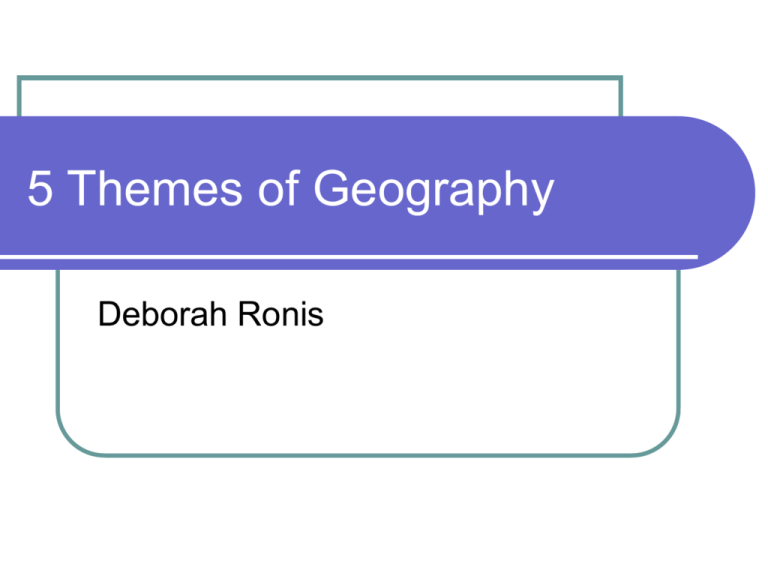
5 Themes of Geography Deborah Ronis 1. Location Asks where are we? Location may be absolute or relative. These locations, whether absolute or relative, may be of people and places. An absolute location is a latitude and longitude or a street address. Relative locations are described by landmarks, time, direction or distance from one place to another and may associate a particular place with another. 2. Place What kind of place is it? What do you think of when you think of China? Places have both human and physical characteristics. Physical characteristics includes mountains, rivers, soils, etc. Human characteristics are from ideas and actions from people that result in changes to the environment , such as buildings, roads, clothing, and food habits. 3. Human Environmental Interaction How do humans and the environment affect each other? We change the environment and the earth changes it back. For example, floods, and earthquakes. 3 key ideas. Humans adapt to the environment. Humans modify the environment. Humans depend on the environment. 4. Movement The movement of people, the import and export of goods, and mass communication have all played major roles in shaping our world. People interact with each other through movement. Travel, trade, emails, texts, etc,. 5. Region A region is the basic unit of study in geography. A region is an area that displays a coherent unity in terms of the government, language or possibly the landform or situation. Regions are human characteristics that can be mapped and analyzed. Formal regions are defined by governmental or administrative boundaries (U.S., The Rockies, etc.) Functional Regions- defined by functionNewspaper service area, cable service area. Vernacular region- those loosely defined by people’s perception ( South, the Middle East)
